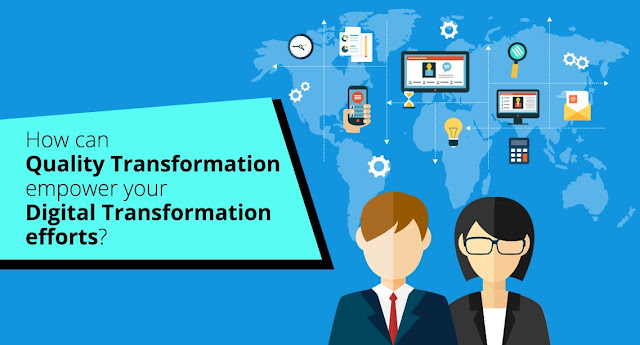What should drive a robust Digital Assurance and Testing strategy
 | |
| Digital Assurance and Testing |
Digitization has had a
transformational impact on businesses and their revenue models. The success of
the number of digital products both in the B2B and B2C segments is underpinned
on customer experience. The better the quality of customer experience offered
by a product, the better is its user adoption and impact on brand loyalty. To
ensure the same, businesses need to follow a robust strategy of digital
assurance and testing. Consequent to the strategy, a product can incorporate
the best of design elements and leverage various digital channels to achieve
the business objectives. With advanced technologies such as AI, Big Data,
Augmented Reality, IoT and Analytics making their presence felt, digital
products cannot but remain oblivious to their impact. These technologies are
increasingly leveraged by businesses to transform their brand building
strategies and to enhance customer outreach.
The digital transformation market is
driven by changing customer preferences, innovation, the spread of new devices,
the advent of new platforms, languages, and frameworks, and the adoption of new
technologies like IoT, AI, and cloud. If one talks about software applications,
they are needed to be updated from time to time. This is needed to keep the
applications compatible with the latest devices, platforms, browsers, or OS
while pre-empting threats from malware at the same time. Even though most of
these updates are delivered free and on a real time basis, they can disrupt the
customer experience a great deal. To ensure such updates are delivered quickly
causing the least disruption to the customer experience, businesses should
embrace digital assurance and testing in the Agile-DevOps mould.
How to ‘manage’ customer experience
in the Agile-DevOps mould?
Managing the customer experience can
be a difficult task given the proliferation of digital devices and growing
innovations in technology. And unless the workforce has incorporated the values
of agility and innovation, and created a quality culture, meeting business
objectives related to customer experience can be a herculean task. The biggest
bottleneck in achieving customer experience can come from within the organization.
It is observed that departments generally work in silos not to speak of even
working at cross purposes occasionally. And unless the department wise
objectives are aligned with the overall business goal, the digital product will
not function to its optimum level. This calls for the implementation of the
Agile-DevOps model of software development, testing, and delivery.
According to this model, the digital
assurance services are made part of the development sprint. This results in a
faster identification and elimination of glitches and consequent saving of
costs. Moreover, the quality culture created as a part of DevOps ensures the
customer feedback about the product is acknowledged and acted upon in real
time. The business should create a Continuous Integration/Continuous Delivery
pipeline to update the product throughout its lifecycle. The digital assurance
services enable businesses to enhance their value proposition, achieve ROI, and
maximize outcomes from the digital campaigns.
The digital transformation testing of
today is all about incorporating automation and using real time data analytics
across multiple digital touchpoints. Automation gives the opportunity to
validate specific features and functionalities of a product by using test
variables. This negates the use of actual demographics in specific regions to
validate a product. For example, instead of testing a particular feature of a
digital product related to the customers in the USA, the same can be validated
through digital QA and testing services during the development and integration
stages itself. The use of virtualization can help create the right test
variables to validate the test scenarios.
Map the user as well as customer
experience
The digital quality assurance
exercise should look into the customer journey and identify pain points that he
or she experiences. The pain points can be experienced by the customer during
his or her interaction with digital touchpoints across devices, channels, and
platforms. Also, the digital testing strategy should be clear about mapping
both the user and customer experiences. Even though the two are used
interchangeably, they are markedly different from each other. If user
experience is about an individual’s interaction with a digital product, a customer
experience is related to the entire lifecycle of the product.
Conclusion
Any digital software testing exercise
should aim at providing a great customer experience by using test automation in
the Agile-DevOps mould. It should take into account aspects like a faster
turnaround time, addressing the security risks, and expanding the test coverage
area for maximum effect.
Diya works for Cigniti Technologies,
which is the world’s first Independent Software Testing Company to be
appraised at CMMI-SVC v1.3, Maturity Level 5, and is also ISO 9001:2015 &
ISO 27001:2013 certified.


Comments
Post a Comment